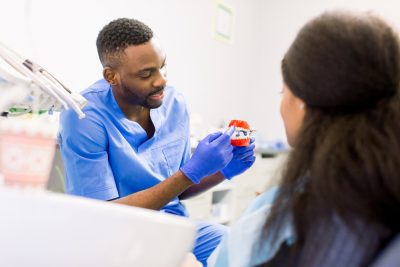Breast cancer remains one of the most prevalent health concerns for women nationwide, affecting approximately one in eight women in the United States during their lifetime. While most awareness campaigns focus on finding lumps through self-examination, medical experts now emphasize that many women experience different, less publicized symptoms that deserve equal attention.
The most widely recognized breast cancer indicator is indeed a new lump or mass. However, not all breast cancers present this way, and even when lumps are present, their characteristics vary widely. A hard mass with irregular edges raises more concern, but breast cancer can manifest as soft, round, tender, or even painful masses as well.
Understanding the full spectrum of potential warning signs empowers women to seek medical attention promptly when something seems amiss, potentially leading to earlier diagnosis and more effective treatment options.
The unexpected symptoms that warrant attention
Several less common breast cancer symptoms often go unrecognized by women who associate the disease exclusively with lumps. Recognizing these alternative warning signs could prove lifesaving:
A peeling, scaly rash around the nipple area might indicate Paget’s disease, a rare form of breast cancer that begins in the nipple and extends outward. This condition often resembles common skin irritations or eczema, leading many women to treat it with over-the-counter creams rather than seeking medical evaluation.
Sudden inflammation or swelling of the breast tissue without obvious injury can signal inflammatory breast cancer, an aggressive form that often doesn’t present with the typical lump. This variant frequently causes the breast to appear red, swollen, and unusually warm to the touch, symptoms many women mistakenly attribute to infection.
An orange-peel texture on breast skin—medically termed “peau d’orange”—results from fluid buildup and skin thickening that can accompany certain breast cancers. This distinctive dimpling resembles the surface of an orange and typically warrants immediate medical assessment.
Swollen lymph nodes in the armpit region, even without a detectable breast mass, may indicate breast cancer that has spread to nearby lymph tissue. Some women first notice this symptom when feeling tenderness or swelling under their arm, rather than detecting changes in their breast tissue.
Nipple or skin retraction, where tissue appears to pull inward, creating an indentation or dimpling effect, occurs when cancer cells affect the connective tissue of the breast. This symptom can develop gradually, making it easier to miss during casual observation.
Persistent breast heaviness or swelling unrelated to hormonal fluctuations deserves attention, particularly when it affects only one breast. While temporary swelling commonly occurs during menstrual cycles or menopause, asymmetrical or continuous swelling might indicate an underlying issue.
Bloody nipple discharge, particularly when it occurs spontaneously from only one breast, raises concern for possible malignancy. While nipple discharge can have many benign causes, blood-tinged fluid warrants prompt medical evaluation.
The pain misconception
A widespread myth suggests breast cancer never causes pain, leading many women to dismiss uncomfortable symptoms. In reality, breast cancer can indeed cause discomfort when tumor growth compresses nerves or when cancer cells release inflammatory substances that activate pain receptors.
This discomfort might manifest as breast tenderness, sharp shooting pains, or even referred pain that extends to the chest wall or upper arm region. While most breast pain has non-cancerous causes, persistent, unexplained discomfort, particularly when accompanied by other symptoms, should never be ignored.
Taking action when symptoms appear
When breast cancer warning signs emerge, prompt action improves outcomes. If you notice any concerning changes in your breast tissue, contact your gynecologist or primary care physician without delay to schedule comprehensive evaluation.
A typical assessment includes physical examination by a healthcare provider, followed by imaging studies such as mammography and ultrasound. In some cases, additional testing like magnetic resonance imaging (MRI) or tissue sampling through biopsy might be necessary to determine the cause of your symptoms.
Trust your instincts regarding your body. If you feel your concerns aren’t receiving adequate attention from your healthcare provider, seeking a second opinion represents an appropriate and proactive step. Early detection significantly improves treatment options and overall prognosis, making timely medical consultation essential.
The screening necessity
While symptom awareness remains critical, regular breast cancer screening plays an equally important role in early detection. Many women diagnosed with breast cancer never experience noticeable symptoms during early disease stages, underscoring the value of routine screening mammography.
Current guidelines from the United States Preventive Services Task Force recommend women at average risk begin mammogram screening every two years starting at age 40. However, women with family history or genetic predisposition may benefit from earlier or more frequent screening based on their individual risk profiles.
For women without insurance coverage or regular healthcare providers, resources exist to ensure access to necessary screening services. The National Breast and Cervical Cancer Early Detection Program provides free or low-cost mammograms to qualifying uninsured or underinsured individuals in communities nationwide.
Risk factors worth understanding
While breast cancer can affect anyone with breast tissue, certain factors increase risk. Understanding your personal risk profile helps determine appropriate screening schedules and preventive measures.
Age remains the most significant risk factor, with breast cancer risk increasing as women grow older. Family history, particularly first-degree relatives (mother, sister, daughter) with breast cancer, raises concern, especially when diagnoses occurred before menopause.
Genetic mutations, most notably in the BRCA1 and BRCA2 genes, significantly increase lifetime breast cancer risk. Women with Ashkenazi Jewish ancestry have higher rates of these genetic variations, warranting consideration of genetic counseling in some cases.
Previous radiation therapy to the chest area, especially treatment received during adolescence for conditions like Hodgkin lymphoma, increases later breast cancer risk. Similarly, previous breast cancer diagnosis elevates the chance of developing new cancer in either breast.
Hormonal influences play important roles in breast cancer development. Early menstruation (before age 12), late menopause (after 55), never having children, or having your first child after age 30 all slightly increase risk due to longer lifetime exposure to estrogen.
Lifestyle factors also influence breast cancer development. Regular alcohol consumption, even moderate amounts, increases risk incrementally. Post-menopausal weight gain and sedentary lifestyle patterns contribute additional risk, while regular physical activity offers protective benefits.
Empowering women through awareness
Knowledge about breast cancer’s diverse presentation empowers women to advocate for their health effectively. Understanding that breast cancer doesn’t always manifest as a painless lump encourages vigilance regarding all unusual breast changes.
Regular self-awareness practices help familiarize you with your normal breast tissue, making it easier to identify concerning changes promptly. While formal breast self-examination techniques have evolved in recent years, general breast awareness—paying attention to how your breasts normally look and feel—remains valuable.
Combining personal awareness with regular medical screening creates a comprehensive approach to early detection. Remember that most breast changes have benign causes, but proper evaluation provides peace of mind and ensures timely intervention when necessary.
The detection window that matters
Early breast cancer detection dramatically improves treatment options and outcomes. When identified at localized stages, five-year survival rates exceed 99 percent, highlighting the critical importance of prompt attention to warning signs.
By familiarizing yourself with the full spectrum of potential breast cancer symptoms—not just lumps—you expand your ability to recognize concerning changes at their earliest, most treatable stages. This knowledge, combined with appropriate screening, provides the strongest defense against advanced disease.
While breast cancer diagnoses understandably cause fear and anxiety, modern treatment approaches continue advancing rapidly. Earlier detection leads to less extensive treatment requirements and improved quality of life during and after cancer care.
Your vigilance regarding unusual breast changes represents a powerful tool in protecting your health. By recognizing the less publicized warning signs of breast cancer and responding promptly to concerning symptoms, you take an active role in safeguarding your well-being for years to come.












